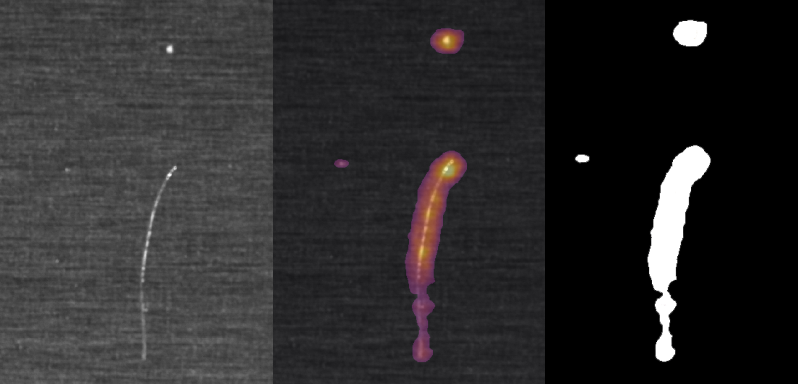Sapera Processing is at the heart of Sapera Vision Software delivering a suite of image processing and artificial intelligence functions which include the following:
 by LINX Taiwan Co., Ltd., CC: BY-ND 4.0 by LINX Taiwan Co., Ltd., CC: BY-ND 4.0
Run AI models in Sapera and combine AI outputs with traditional machine vision tools. Use pixel segmentation and heatmaps to measure features and defects. |
Sapera Processing also offers a suite of demo programs showing how to integrate acquisition from Teledyne devices via Sapera LT.
Sapera Processing includes a series of classes to perform AI inference on models generated by Astrocyte™ (available only with Sapera AI license).


Sapera Processing offers two different barcode reading algorithms:
As part of the barcode tool Sapera Processing also offers Print Quality Grading. Grading is used to verify the quality of 1D and 2D marks.
Area-based
Edge-based

Sapera Processing includes a powerful frame grabber configuration and camera set-up utility plus a suite of image processing tools including a series of highly optimized basic image processing functions, Blob Analysis and Calibration tools.
Sapera Processing's Measurement Tool is a video metrology tool for machine vision inspection applications involving measurement for positioning, identification and guidance. The measurement tool includes an extensive suite of highly optimized functions to facilitate real-world measurements. In addition, the measurement tool features a wide selection of Image Markers using which measurements can be performed. The marker type includes point, line, polyline, arc, circle, spoke, and many more to facilitate multiple simultaneous measurements from one or more selected paths. The highly accurate results are computed to with sub-pixel accuracy. The measurement tool can be combined with Sapera Processing's calibration tool to obtain consistent and accurate real-world measurements.


A highly integrated optical character recognition tool that is scale and contrast invariant, the OCR tool supports both solid and dot matrix fonts and can be trained on user fonts. Its robust recognition technique is optimized for speed and accuracy. The ability of the OCR tool to operate on significantly degraded images makes it ideal for repetitive inspection tasks performed in the pharmaceutical, electronics and semiconductor industries.

Sapera Processing features an advanced color tool for machine vision that delivers speed, accuracy and flexibility to imaging applications that require color inspection. Ideal for sorting, verification and inspection in food, packaging, print, textile and electronics inspection, this powerful tool supports multiple color spaces such as HSI, CIELAB, RGB, and YUV and can perform color classification in native color space. With it's built in support for color calibration, user trainable color classifier, Delat-E measurement and lookup table operations, the Sapera Processing Color tool augments the performance of Sapera Processing image processing and analysis libraries


| Document | Type |
|---|---|
| Sapera Processing Brochure |
| Document | Type |
|---|---|
| Sapera Processing Programmer's Manual .NET | |
| Sapera Processing Programmer's Manual C++ |